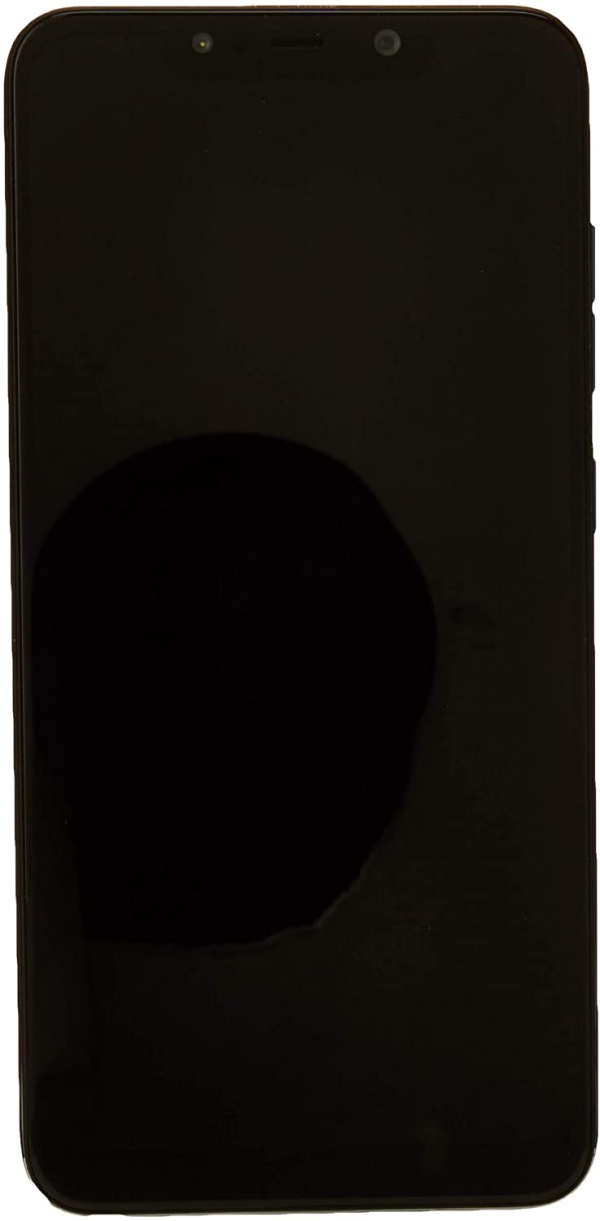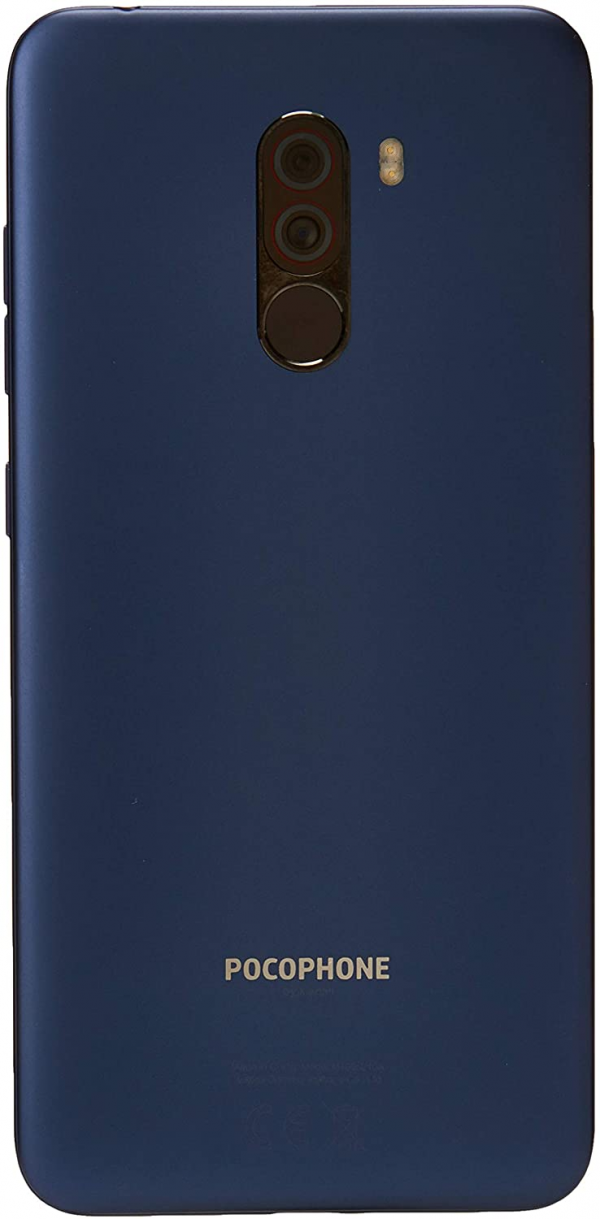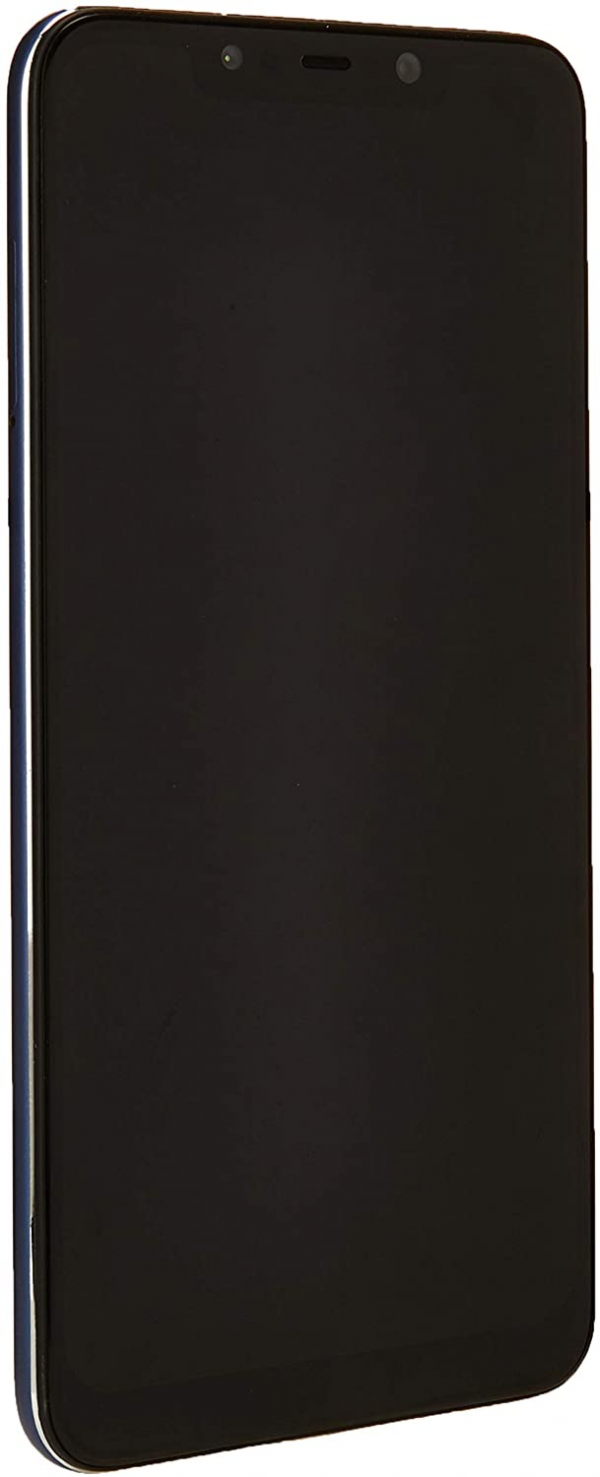Pocophone
Pocophone F1: the new high-end killer
Aprox. 299€ - see price -
See specificationsA "new" player enters the smartphone market. Launched in India in August 2018, the Pocophone brand aims to shake up a market that is falling asleep on its laurels. A not-so-crazy challenge when you are actually a subsidiary of Xiaomi.
Our review
Presentation
Barely launched on the old continent, Xiaomi is already starting a turning point in its history. The manufacturer has launched on the stock market and will not be long in going upmarket, by the admission of the financial director of the firm. A small revolution for the brand which has made its mark thanks to its mid-range mobiles at unbeatable prices. But the company will not abandon this juicy segment so far, since it has just launched its satellite brand Pocophone, of which we are testing the first device, the F1.
Jai Mani, the Pocophone product manager, explains that he wants to shake up the market with this F1. And given the data sheet and the price of the phone, it's a successful bet. F1 is already commercially available (from € 349) and sports a high-end technical sheet with its 6.2-inch screen and Snapdragon 845 chip. In short, the Pocophone F1 wants to do in 2018 what OnePlus had managed to do in 2014 with the OnePlus One: shake up the industry and offer a high-end mobile at a price never seen before.
We can therefore ask the same question as in 2014: revelation or wet marketing firecracker?
Note that we are testing the version here with 128 GB of storage available at € 399. The mobile call price concerns the version with 64 GB of memory (349 €).

Ergonomics and design
We can not say that Pocophone really brainwashed to design this mobile. The Pocophone is all that is most commonplace: a gray plastic back housing the two cameras and the fingerprint sensor. On the other side, an 18: 9 notch screen that occupies a little more than 80% of the front face. Curved screen point, worked metal or anything else. This simplicity is claimed by the manufacturer who preferred to put all his budget in the technical sheet. A choice that will displease some and suit others.
In terms of ergonomics, the F1 has nothing to blame for. The fingerprint sensor - which works well and quickly - naturally falls under the index finger, whether you grab the phone with your right hand or your left hand. And the same goes for the volume buttons. Like what, simplicity sometimes pays.
It is rather on the technical side that Pocophone has made some concessions. The phone is not waterproof and does not take advantage of NFC. Wireless payment point or water resistance. We will have to be careful. Otherwise, the USB-C port is there, as is the mini-jack port and two SIM card slots or a SIM card plus a microSD card.

Screen
Pocophone has also made a concession on screen technology. No Amoled here, the least energy-consuming technology is still too expensive. It is therefore a 6.2 inch Full HD + IPS screen (2246 x 1080 px) that we find here. But the manufacturer has made a good effort since the slab that equips F1 is very good. Once the “default contrast” profile has been selected, you are in front of a screen with impeccable colorimetry: Delta E points to 1.2 and the color temperature to 6,200 Kelvin. Two values very close to "perfection". Lovers of more vibrant colors - and less loyal - can always opt for one of the other available settings.
The maximum brightness (428 cd / m²) is enough to make the mobile readable even in direct sunlight. The minimum value for its part drops to 1.1 cd / m², enough to spare the pupils of night readers. The same goes for reflectance, which is very contained (10%). Only the contrast ratio sins a little (1,416: 1).
The Full HD + definition and the resolution of 403 pixels per inch are more than enough to navigate with ease. As for the tactile delay and the afterglow, the two values are sufficiently low (respectively 112 ms and 15 ms) to ensure good fluidity. In short, even if the Pocophone does not adopt the best technology on the market here, it still has a quality panel. And that's good, as the screen is the centerpiece of a smartphone.

Audio
The Pocophone's headphone output could have been flawless if the power delivered had been more generous. Most listening devices will still do, but there are better ones on the market. The signal is clean, undistorted and the soundstage broad and well marked. So almost faultless.
The two speakers, meanwhile, deliver a slightly pinched sound and we notice a slight distortion at full volume, but for troubleshooting, it's pretty good.

Performances
No worries about the performance side. With its Snapdragon 845 chip and 6 GB of RAM, the Pocophone F1 runs like a racing car on all apps, even the most demanding. We juggle easily between different tasks without ever feeling a hitch or a slowdown. A real pleasure.
Also positive, the phone only heats very little. It barely exceeds 37 ° C, whether after long minutes of play or a photo and video capture session. Never enough to interfere with use so.
No need to specify that the mobile is also a real monster in play and that it has no trouble turning even the most demanding titles in the Play Store with impeccable fluidity and an excellent level of detail.
Photo
Photo is very often the area in which these ambitious phones break their teeth. Well this is almost not the case here. On paper, the main sensor of the F1 is the same as that of the Xiaomi Mi 8 (12 Mpx + 5 Mpx for portrait mode). In fact, even with the same equipment, the F1 manages to do slightly better than its distant cousin.
The result is not exactly as good as that of the phablet of the Korean manufacturer, but it is still slightly above that of the Honor 10 or OnePlus 6. In reality, what sins is as often software processing which forces smoothing. Result: we get less details than on the Note 9 and the sharpness is slightly less pronounced.
On the other hand, the colors are just, the contrast well pronounced and the white balance impeccable. We just regret that the quality takes a little hit on the edges of the shot. But otherwise, the Pocophone is doing well and doesn't make the same mistakes as the OnePlus 6, which produces less natural and less detailed shots.
In low light, the F1 loses slightly in quality, but still remains above the competition. We notice a bit of grain here and there and loss of detail in the densest areas, but with a fairly short pause time (1/17 s) and a reasonable rise in ISO (3000 ISO), the F1 manages to capture a good bundle of light while maintaining good image quality. The colors remain faithful and the contrast well pronounced. Only downside, on a complex scene, the mobile often has trouble taking stock and adopting the right white balance. It will take some battling to get a flawless photo. But raw quality question, it's still impressive.
The application, meanwhile, is quite complete, offering a pro mode that allows you to take control of the exhibition, the development, etc. Portrait mode for its part produces quality shots, but the bokeh is very light and the exposure sometimes a little capricious. The clipping is properly done, no worries on that side.
Finally, the front sensor produces a nice result, rich in details, but which lacks sharpness slightly. It is still amply sufficient for everyday self-portraits.
Autonomy
Having a powerful and efficient mobile is one thing; having a mobile that goes the distance is another. And fortunately, on this aspect too, F1 provides. On our home autonomy test, the phone and its 4,000 mAh battery struggled for not less than 5:33 pm before falling below the symbolic bar of 15%. What quietly ensure two days of autonomy in "normal" use. This is more than most of the competition mobiles. In other words, it is once again a hell of a performance.
Finally, it will take just 2 hours for a full recharge of the device with the supplied block.
Conclusion
It's impossible not to be surprised by the performance of this Pocophone F1. For an unbeatable price, the manufacturer offers an experience far superior to the competition. If we except a slight photo dropout, Xiaomi succeeds in a feat with its new brand and therefore stands out as the OnePlus of modern times. The other "high-end killers", Oneplus 6 and Honor View 10 in mind, are worried.
Specifications
Reviews


Price to features ratio is incredible
It does support 4g lte. You have to manually switch to via settings. What you get for the price ratio is simply unbelievable. Latest processor, 6 gb of ram is plenty. 4000 mla battery and water cooling. This phone should be $ 600 +. Thanks #xiaomi for pulling this off. Great job.
Why haven't you bought this yet
This phone blew away all expectations I had. It really is an amazing device with a value that is untouchable. This phones camera is stunning, when I've shown people some pictures the phone has taken they're amazed with the detail. Battery life is amazing, I've had the phone on playing video for 8 hours strait before and the thing won't die. Coming from an iPhone 6 that has less than half of the Pocophones battery this thing was a major upgrade. I really have no complaints for between $ 300- $ 400 this phone should be better known and people should really reconsider dropping their life savings on the newest iPhone. Hopefully this review was useful :)
Great Phone, Lacking 4G in My Area
This phone is wonderful to use. It's snappy and quick while having a modern android feel. The phone still feels quite premium despite the plastic back, and the cameras are wonderful in well lit areas. The finger print sensor is quick and honestly, MIUI feels really good in my opinion.
The only downside is, 4G LTE may not be usable in all areas of the US I get 3G but am in an area where wifi is easily accessible, so I'm not too bummed about the speed of data. That said, I knew what I was getting into, so really this phone is a 5 in my heart, but a 4 objectively!
super great value!
the phone is a mind blowing value. basically the hardware you would expect in a flagship phone at an easy on the bank price point.
there are places where ether build quality or part quality is a bit low but what do you expect for the price point. i honestly think the sacrifices are well thought out and gladly will make the trade off.
no ceramic / glass body? whatever its going to be in a case its entire life anyway.
no good viewing angles on the screen? whos going to be looking at it other than you !?
not waterproof? that's phone. i don't plan to go swimming with my phone. this also allows it to have a headphone port which i consider a godsend. too many phones out ditching the headphone port. i still use it regularly!
and now for the cons. there are a couple. but can be delt with with some modification or just getting used to it.
bloatware. this thing is LOADED! if i could just reinstall android with none of the BS id gladly like to do that! this thing has soo much crap on it, as well as the tramp stamp the default camera app leaves on photos. yea. that's not going to fly. as well as the version of android itself. the skin on it. not a fan. just give me vanilla. please. even the camera app not having the option to quick launch with 2 quick presses of the power button.
i moved up from my oneplus 3 to this for gaming reasons and i have to say. its WAY faster, pokemon go launches in at least 1/3 of the time. and runs soo much smoother.
i was planning on getting a oneplus 6 but since they have steadly increased price to almost double that of the oneplus 3. ill move on, will update review as needed.
UPDATE! since October i have been using the device. though the price is attractive here are the things you lose
1. quality device. works fast at first but whiten moths i notice it getting warmer than usual and performance starting to take a hit, (mostly noticeable with pokemon go) also. my wireless data is now in SUPER flakey mode. going out entirely every 5 min even with full bars and 4g. (3.8gb remaining on data plan before being throttled)
2. after market devices. hardly any skins screen protectors that are worth buying.
3. ZERO customer support. i tried contacting the manufacturer directly and because the device was never officially released in the US. the refuse to honor any type of warranty or service the device in ANY way.
bottom line: AVOID CHINESE PHONES!
Great!
Very good !, guys you should advertise this device more !. I bought this phone for a replacement of my S7 edge. recommended!
If only there was a US version....
I was really excited for this phone seeing as i was coming from a trashed moto g and i would have 10/10 recommended this device if it support US LTE bands. Only works on 3g in the US. huge bummer. Guess ill be saving for the oneplus 6 instead
poco loco
pocophone is a good for the money. you would be fool to pass it up. i have essential phone and i bought this as a back up but now this has become my main and essential is the back up now. price is good. signal is 4g hspa on att but i cant say anything but tmobile. long battery life and wonderful performance.i am regretting not getting 128gb version but then i might get the second gen when it comes out lol so ... love this very much and i have had lg g7 and s9 before and i have played with my wife's pixel before haha so i know a good android phone when i see one. this is it.cant go wrong at 300 yeah you are not going to get lte speed but i am normally at a place there is wifi dont matter to me much.
My best purchase from 2018
I looked at a lot of reviews about this phone and I am happy I bought it anyway. This phone has performed even better than I expected. I am one of those people that uses a cell phone for basic talk / texting and minor game play (candy crush saga fanatic) so this phone had the fancy extra of a iPhone X or Google Pixel, but not the price tag. This phone works just fine even though I am in the United States. This really is a great phone.